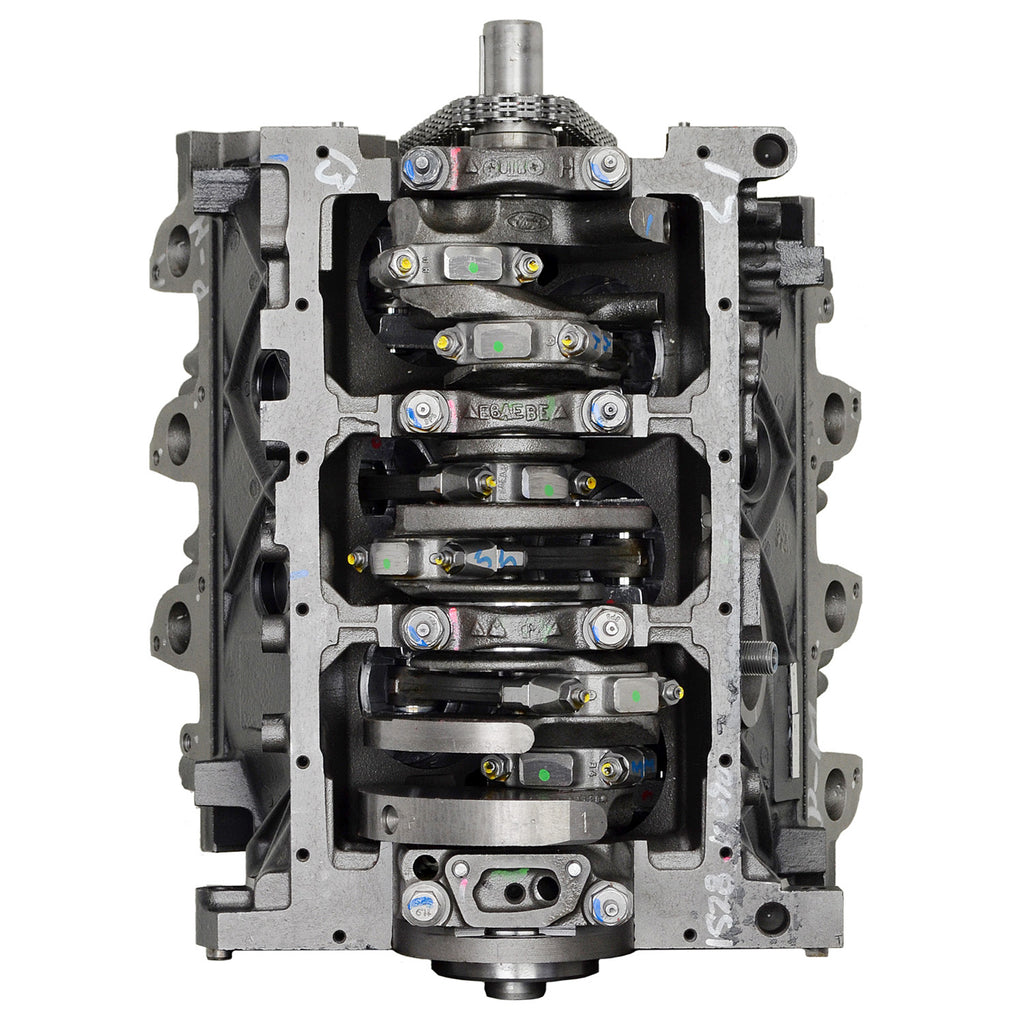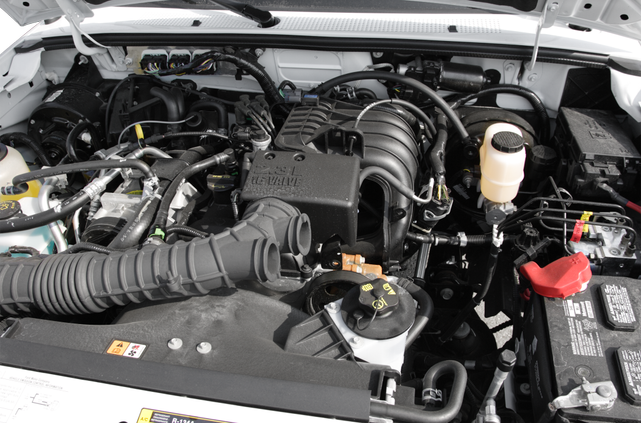Is the 2.2 Ford Ranger Engine the Right Fit for Your Driving and Work Needs?
Is the 2.2 Ford Ranger Engine the Right Fit for Your Driving and Work Needs?
Blog Article
Comprehending the Fundamentals of Cars And Truck Engines: Kinds, attributes, and features

Summary of Cars And Truck Engines
An auto engine acts as the heart of a car, transforming fuel into mechanical energy to thrust it forward. This elaborate system comprises numerous parts that operate in unison to make sure ideal efficiency and performance. The basic procedure of an automobile engine involves the interior burning procedure, in which fuel and air are combined, sparked, and removed to develop power.
The engine's design can substantially affect its efficiency, fuel performance, and emissions. Key parts include the cyndrical tube block, pistons, crankshaft, and camshaft, each playing a critical role in the engine's total feature.
In enhancement to these parts, engines usually make use of numerous systems such as fuel injection, ignition, and cooling systems to enhance efficiency and durability. Recognizing the basic auto mechanics of vehicle engines is crucial for identifying problems and executing upkeep, ultimately contributing to the vehicle's dependability and efficiency in time.

Kinds Of Automobile Engines
Vehicle engines can be classified right into several kinds based on their layout, gas kind, and operational concepts. 2.2 ford ranger engine. The most common classifications consist of inner combustion engines (ICE), electric engines, and crossbreed engines
Inner combustion engines, which can be more separated right into fuel and diesel engines, run by igniting a fuel-air combination to generate power. Fuel engines are generally lighter and smoother, while diesel motor are much more fuel-efficient and deal better torque.
Electric engines use electric power kept in batteries to power an electrical motor, offering instantaneous torque and absolutely no discharges during procedure. As modern technology breakthroughs, electric lorries (EVs) are progressively coming to be popular for their ecological benefits and lower running expenses.
Crossbreed engines integrate elements of both inner burning and electric engines, allowing for versatile power resources and boosted gas performance. They can operate in various modes, using either the gasoline engine, the electric motor, or both concurrently.
Each kind of engine has unique advantages and negative aspects, affecting their application in various lorry kinds and market segments, from small automobiles to heavy-duty vehicles. Recognizing these types is essential for making notified choices pertaining to car option and efficiency assumptions.
Engine Features Discussed
Comprehending engine features is crucial for understanding just how lorries run efficiently. At the core of any type of interior burning engine exists the basic procedure of transforming fuel into power. This process starts with the consumption stroke, where air and gas are attracted right into the combustion chamber. Following this, the compression stroke compresses the air-fuel mix, boosting its temperature level and stress.
The ignition occurs next, firing up the mix and producing a fast expansion of gases. This force drives the piston down during the power stroke, which ultimately converts right into the rotational activity of the crankshaft. The exhaust stroke after that gets rid of the invested gases from the chamber, giving way for a new cycle to commence.
In enhancement to these key features, engines likewise integrate systems that handle cooling and lubrication, ensuring optimum functional temperatures and reducing rubbing in between relocating components. This elaborate interplay of features makes it possible for the engine to generate the power needed for car propulsion while preserving efficiency and integrity. Comprehending these functions gives important insight right into the complexities of auto engineering and enhances the capacity to diagnose and resolve engine-related problems successfully.
Key Engine Attributes
Engine design incorporates a number of key attributes that dramatically affect durability, efficiency, and performance. One of the most critical elements is the engine arrangement, which includes inline, V-type, and level layouts. Each configuration influences the engine's balance, size, and power output, consequently influencing overall automobile characteristics.
One more essential function is the engine variation, describing the overall quantity of all cyndrical tubes. Bigger variations generally generate even more power yet might compromise fuel efficiency. Engine products additionally play a pivotal role; high-strength and lightweight materials, such as aluminum and magnesium alloys, improve performance without including too much weight.
The kind of gas shot system used-- such as multi-port or straight shot-- affects burning performance and emissions. Turbo charging and turbocharging are functions that enhance engine performance forcibly additional air into the combustion chamber, boosting power outcome without dramatically raising engine size.
Finally, the existence of sophisticated engine administration systems optimizes fuel-air mixture and ignition timing, adding to smoother procedure and far better gas economy. Collectively, these attributes specify an engine's abilities, setting the foundation her explanation for its efficiency and durability in an affordable automobile landscape.
Maintenance Tips for Engines
Proper engine upkeep is critical for making certain ideal performance and longevity, as neglecting regular care can result in significant issues down the line. To keep your engine successfully, start with regular oil changes, commonly every 3,000 to 7,500 miles, relying on the kind of oil used. Fresh oil lubes engine elements, reducing rubbing and wear.
In addition, checking coolant degrees is vital to stop getting too hot. Ensure that the coolant is covered up and is in excellent condition to Find Out More maintain reliable temperature law. Consistently replace and inspect air and fuel filters, as clogged up filters can impede airflow and fuel distribution, jeopardizing engine performance.
Furthermore, pay attention to ignition system and ignition systems. Worn or malfunctioning trigger plugs can result in misfiring and lowered performance. Inspecting the battery terminals and links for corrosion is likewise essential, as a weak battery can impact engine beginning.

Conclusion
In summary, an extensive understanding of automobile engines includes different types, functions, and vital functions that substantially affect car performance. Interior burning engines, in addition to electrical and hybrid choices, show diverse mechanisms for power conversion. 2.2 ford ranger engine. Identifying the important features, such as consumption and exhaust cycles, alongside vital engine functions like configuration and fuel injection systems, furnishes automobile owners with the knowledge necessary for reliable upkeep and operation, ultimately boosting vehicle longevity and performance
A vehicle engine serves as the heart of a lorry, transforming fuel right into mechanical power to push it ahead. The essential operation of an auto engine includes the internal burning process, wherein gas and air are mixed, ignited, and eliminated to produce power.
On a regular basis check and replace air and fuel filters, as stopped up filters can hinder air movement and fuel delivery, endangering engine effectiveness. - 2.2 ford ranger engine
In summary, a detailed understanding of automobile engines encompasses different types, click to read more features, and essential features that dramatically influence lorry performance. Identifying the important features, such as intake and exhaust cycles, along with essential engine attributes like arrangement and fuel shot systems, equips auto owners with the understanding essential for effective maintenance and operation, ultimately boosting car durability and effectiveness.
Report this page